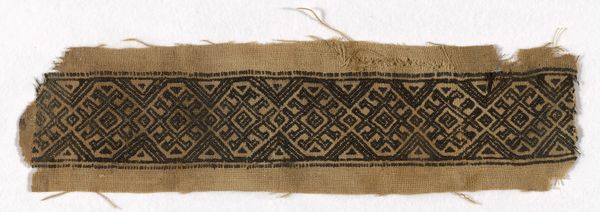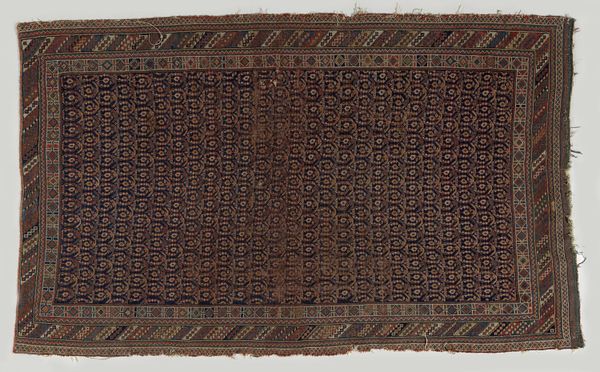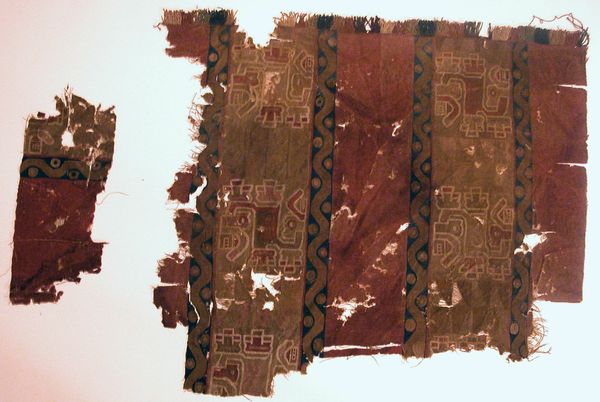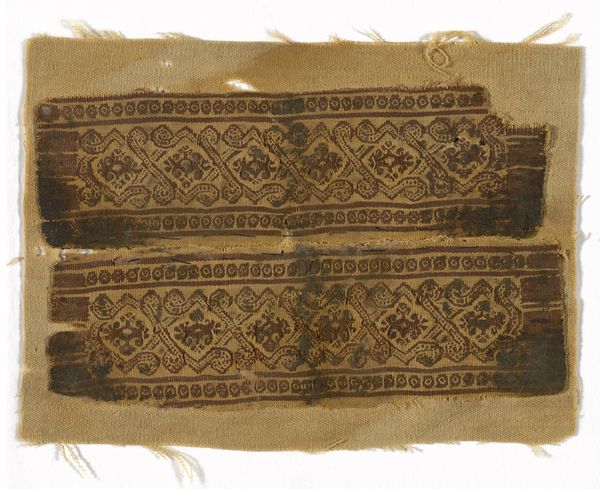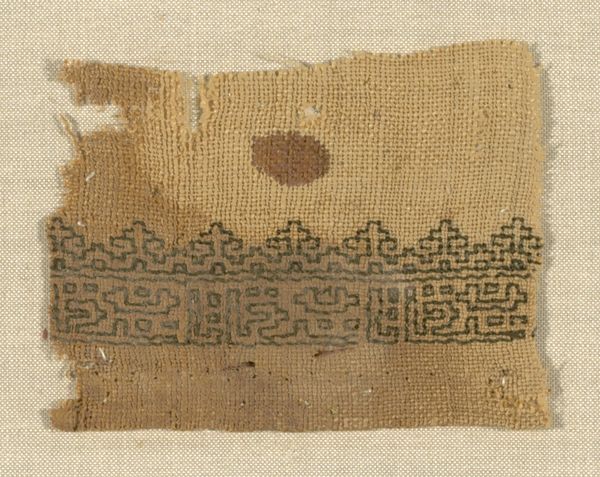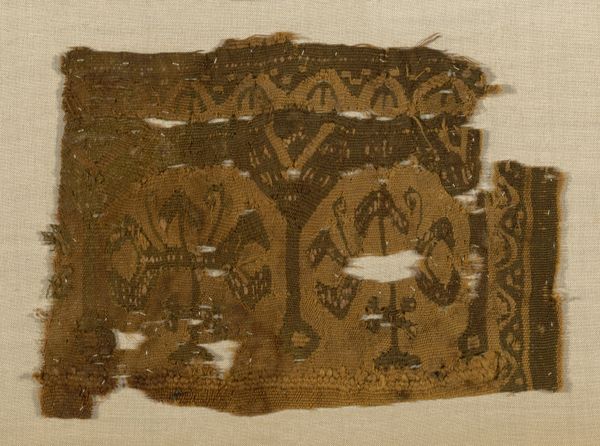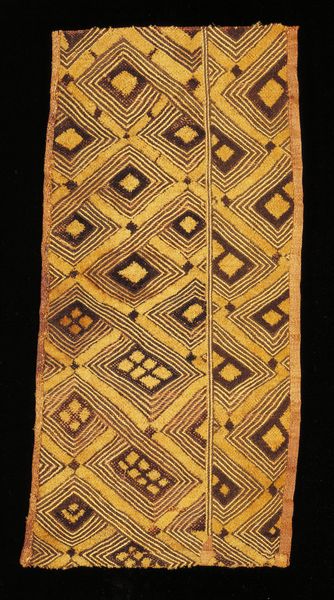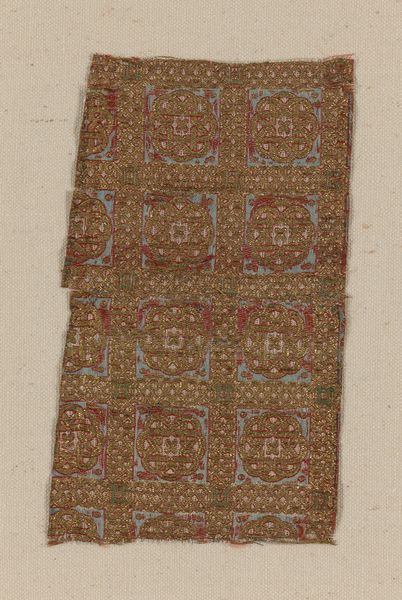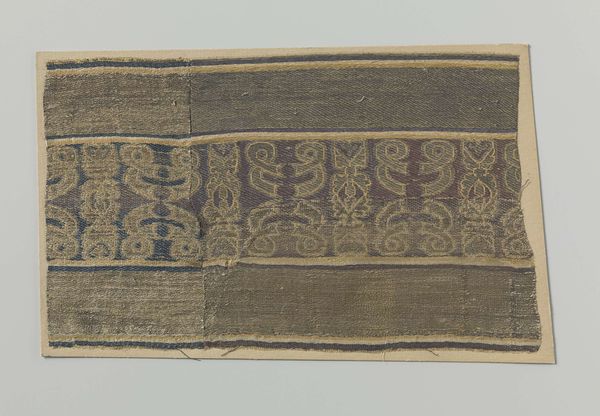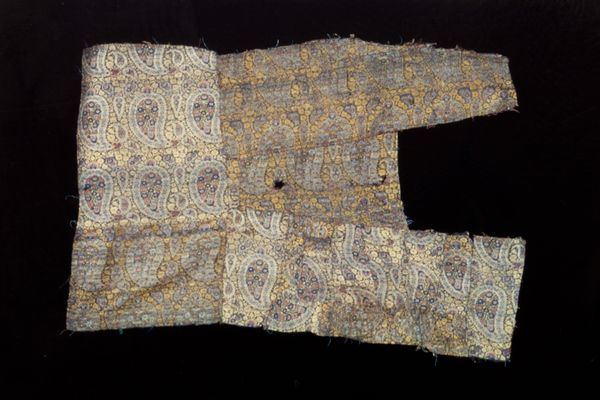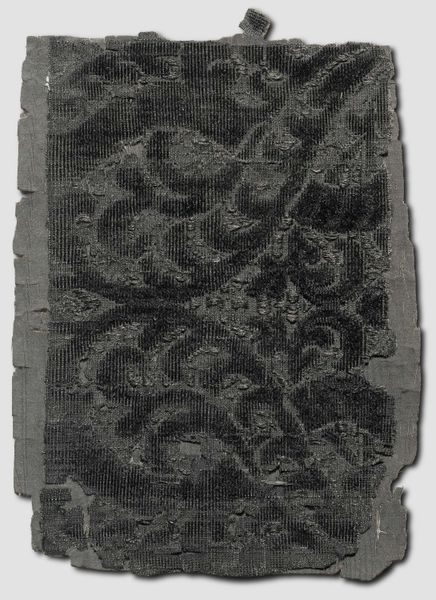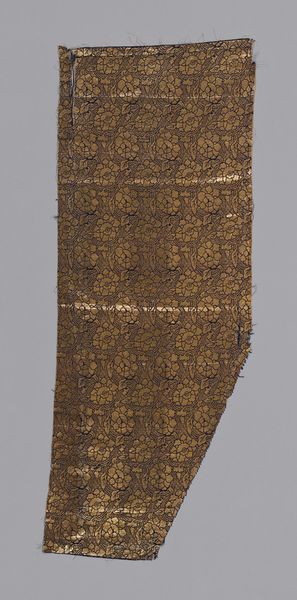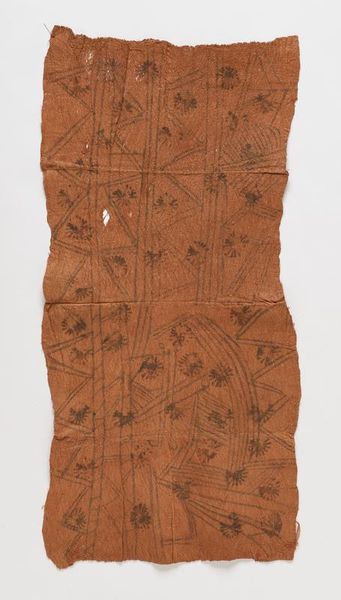
fibre-art, weaving, textile
#
fibre-art
#
medieval
#
weaving
#
gothic
#
textile
Dimensions: 16.1 × 19.1 cm (6 3/8 × 7 1/2 in.) Repeat: 5.3 × 6.8 cm (2 1/8 × 2 3/4 in.)
Copyright: Public Domain
Editor: This artwork is titled "Fragment," created around the 14th century by an anonymous artist. It’s a textile piece, a woven fiber art now residing at the Art Institute of Chicago. The way the fabric is frayed really gets to me; it gives a strong sense of history and the passage of time. What visual elements stand out to you in this piece? Curator: The primary visual element, even in its fragmented state, is the grid. Observe how this organizing structure creates a field across which your eye travels. Do you notice how within each square of the grid a smaller, more intricate design emerges? The interplay of these forms is crucial to the textile’s visual rhythm. Editor: Yes, I see that. It almost looks like small, stylized figures contained within each square. Is the limited palette part of that visual rhythm too? Curator: Precisely. The limited color scheme—the faded browns and blues—contributes to the harmony of the overall composition. The subtle shifts in tone articulate the weave and add depth to the surface. Ask yourself, how does the textile manipulate the negative space? How is the line and the structure in tension, playing with geometry and symmetry? Editor: I hadn't considered the negative space so much. Thinking about it now, the gaps really emphasize the pattern that remains. The whole artwork presents visual riddles of form! Curator: Precisely. Through careful examination of form, we appreciate its artistry. Even in its incompleteness, this "Fragment" presents a complete aesthetic experience. Editor: Looking closely at this textile, I now understand that this Fragment has much more depth than what meets the eye, beyond it being just aged or decayed! Curator: Indeed, viewing the elements from this perspective reframes the conversation completely.
Comments
No comments
Be the first to comment and join the conversation on the ultimate creative platform.
